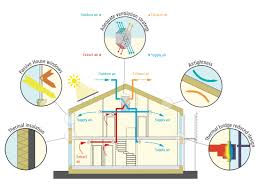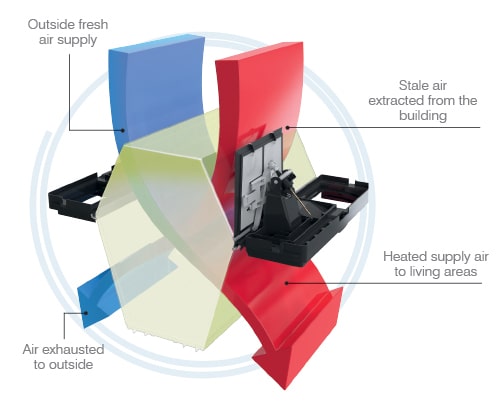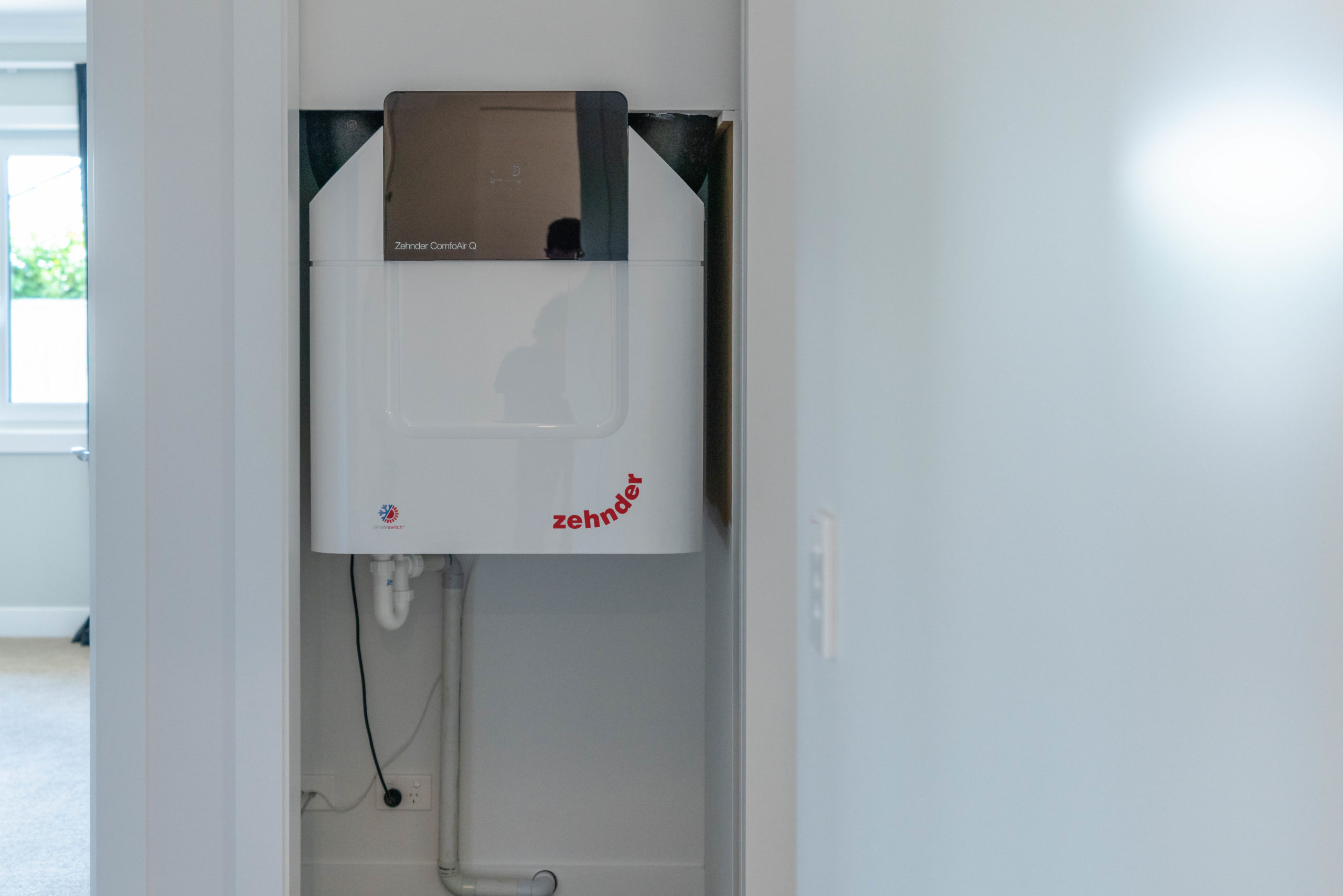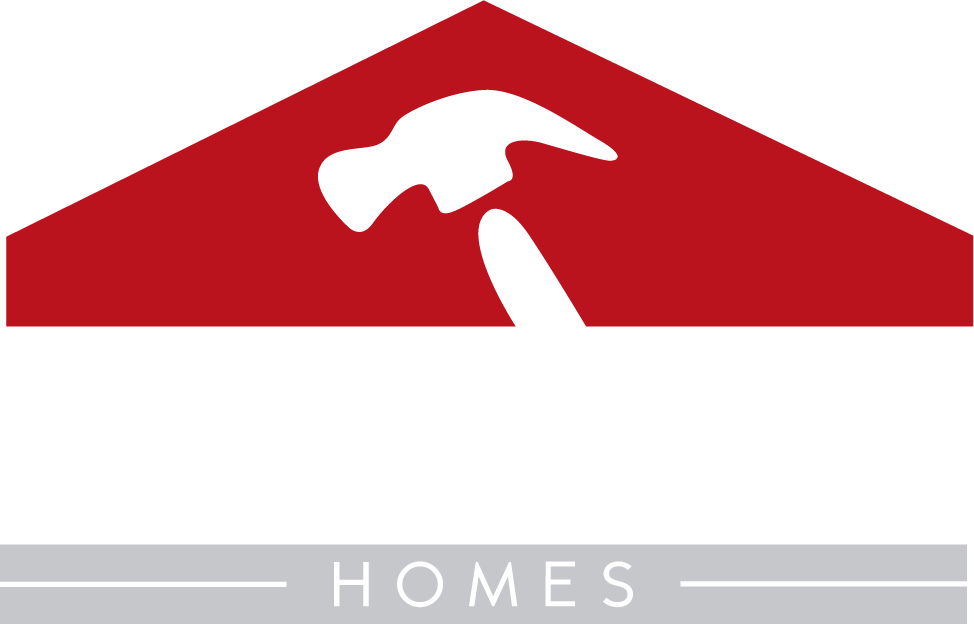The Low Down: Mechanical Heat Recovery Ventilation (MHRV)
MHRV is a system that uses the heat from stale exhaust air to preheat incoming fresh air with the help of a fan. This process reduces the energy needed to bring outside air up to the ambient room temperature.
As fresh air enters the home, moisture is continuously removed and allergens are filtered out. This system effectively creates a warm, dry, and healthy indoor environment where air movement can be controlled. It works best in spaces that are airtight.
Diagram: iPHA

Like the human respiratory system, this exchange of air is performed in a single area of the home, the central unit (the lung).
Outgoing air and incoming air never mix in the heat recovery process, they simply pass in separate channels in the central unit, allowing an exchange of heat through conduction – a thin metal plate keeps the airways separate. When an efficient heat exchanger is used, most sensible heat can be recovered from outgoing air, and transferred onto supply air.

Forced ventilation breaks the reliance on wind and occupant behaviour to provide good indoor air quality. A fan becomes the main driver for ventilation. Stale air containing any contaminants, spores or allergens is forced outside and fresh filtered air is allowed in, improving air quality and providing a healthier living environment.
In a typical situation fresh air is supplied to bedrooms and living areas, and exhaust air extracted in kitchen, toilets and bathrooms.
Image: Zehnder
Efficiencies of MHRV’s
The ‘efficiency rate’ of an MHRV unit determines how much energy will be saved by using that system. Although it requires the operation of a fan (hence the ‘mechanical’ word in its title) on a continual basis, the energy recovered from the inside air is many times that of the energy required for the fan – which is often compared to a lightbulb.
Typical heat recovery efficiencies range from 55% to 95%. European models are generally rated much higher and cost often reflects efficiency but not always. Talk to your builder about the options available. Whilst the European units are manufactured overseas, they are easily available through NZ distributors.

Allergen Control
Most allergen causes are removed with the installation of the highly efficient heat recovery unit. This unit cleans and circulates the air in a room providing fresh pollen-free and dust-free air once every three hours and does not release ozone back into the air from the filtration process. This is great news for everyone, especially for those with allergies or respiratory. A German Zehnder system, for example, can remove 98% of pollen from your air and the filters at the entry of the controlled air system block particles up to 3 times thinner than a human hair.
Often overlooked is humidity control. MHRV’s remove moisture from the incoming air which without sufficient ventilation can lead to dampness and mould contributing to further allergens in the home.
Don’t Confuse HRV (The System) with PPV Systems
Whilst each has their own uses and benefits, the term HRV stands for Heat Recovery Ventilation System, and should not be confused with company names or other systems that are not true heat recovery systems. Many ventilation systems are better described as, positive pressure ventilation (PPV) systems.
PPV’s have a specific purpose – to manage condensation and moisture in the home. This is not the same as MHRV (heat recovery) which is more focused on providing a comfortable healthy the living environment with minimal energy consumption.
Our next blog will explain PPV in more detail.

